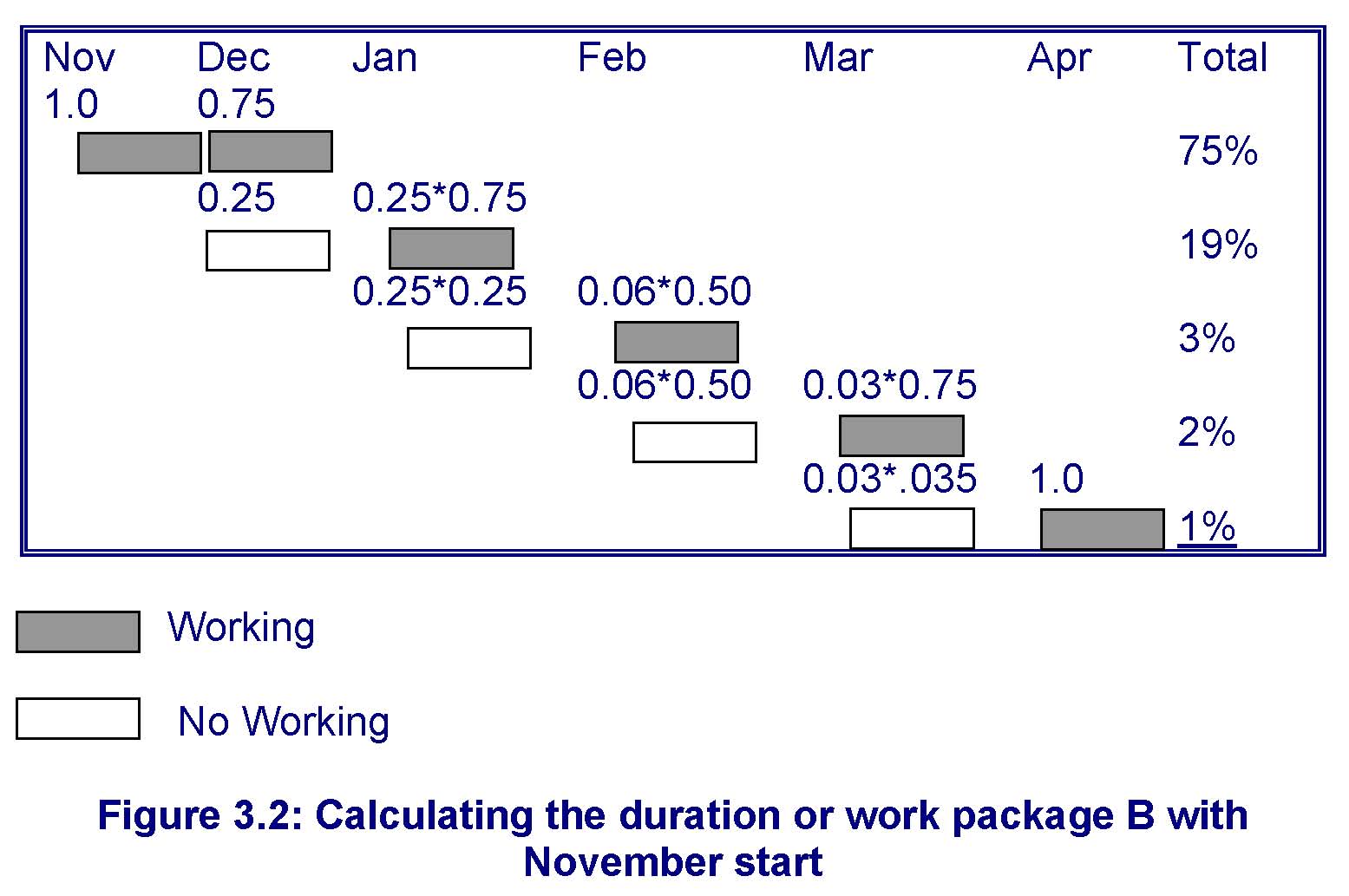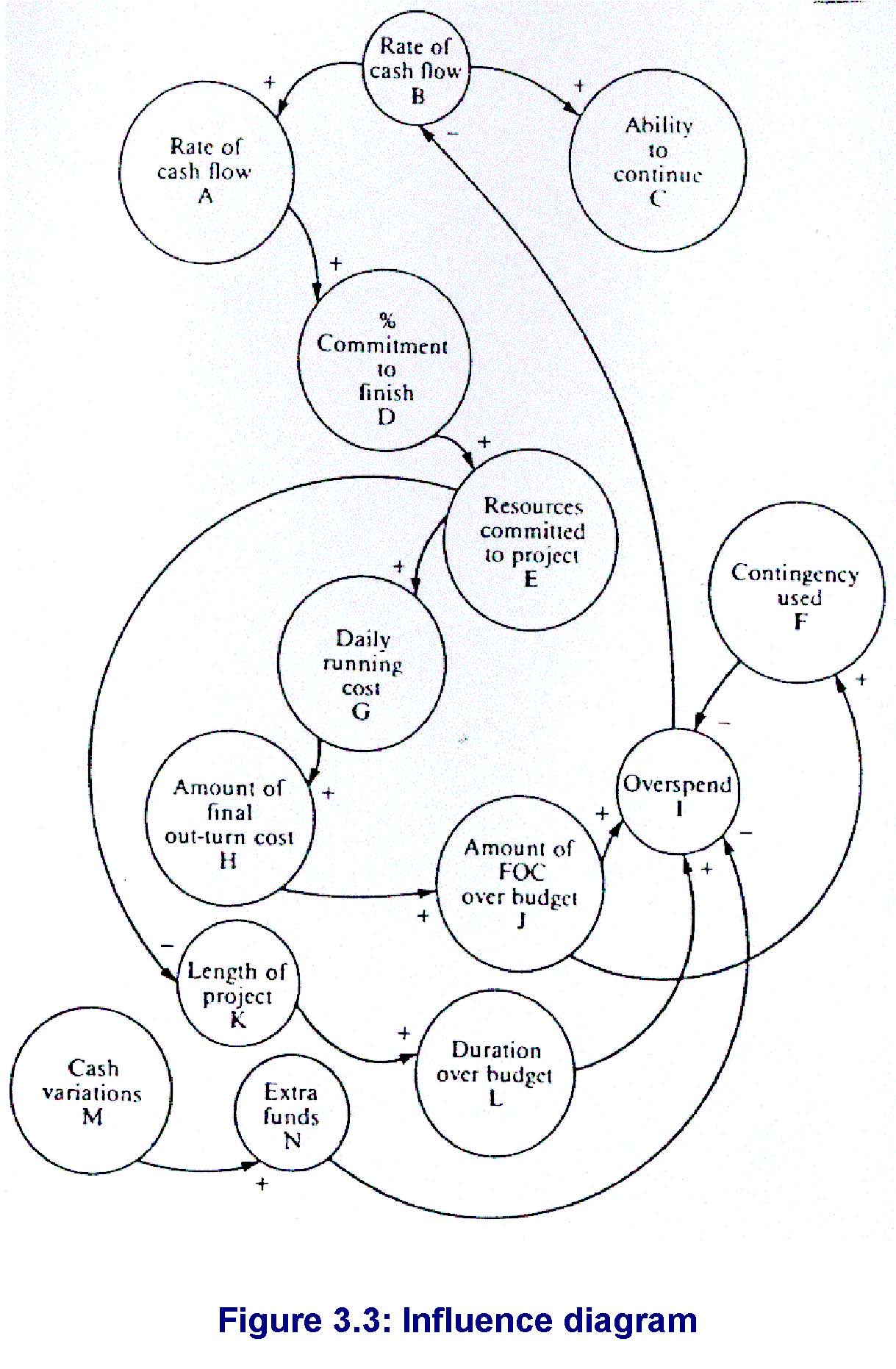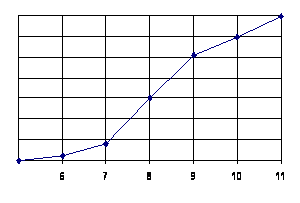|
Risk Assessment of
Several Risks Combined
Case Study:
It is a rare project that has only a single
source of risk, so to determine the total impact of risk on
a project the elements must be combined. If we include all
possible sources of risk into the model, it will become
impossibly complicated, so we limit our attention to the
significant few, the 20 per cent that have 80 per cent of
the impact. The work breakdown structure is a key tool in
this integration of the risk. In practice, there are two
approaches:
- A top-down approach, in which key risk
factors are identified and assessed at a high level of work
breakdown, and managed out of the project
- A bottom-up approach. in which risks are
identified at a low level of work breakdown, and an
appropriate contingency made to allow for the risk
3.2.1 The Top-Down Approach
The top-down approach can provide managers
with checklist of potential risk factors based on previous
experience and can help them to determine each risk's
relative importance. Furthermore, by identifying the
controlling relationships at a high level it enables project
managers to find ways of eliminating the most severe risks
from their projects.
Figure 3.1 is the top-level network
for a simple project to build a warehouse where there are
four packages of work, see Table 3.1. Assuming end-to-start
dependencies only, the duration of the project is seven
months. It might be possible to fast track the project by
overlapping work packages. However let us assume that, that
is impossible on the path A-C-D: it is not possible to buy
the steel until the design is finished and because all the
steel will arrive at once, erection cannot begin until the
steel has arrived. It might be possible to start work on the
site before the design is finished, but there is no need
because the duration will be determined by the delivery of
the steel.
|
|
|
1 |
2 |
3 |
|
|
-2 |
Prepare site and foundation |
|
0 |
3 |
3 |
|
|
3 |
2 |
6 |
|
|
5 |
2 |
7 |
|
Design building and foundation |
|
|
|
|
|
Erect steelwork |
|
0 |
0 |
3 |
|
3 |
2 |
5 |
|
5 |
0 |
7 |
|
|
Procure steelwork |
|
|
3 |
0 |
5 |
Figure 3.1: Simple precedence network for
constructing a warehouse
Table 3.1: Project to erect a warehouse
|
No |
Name of Work Package |
Preceding Package |
Duration (Months) |
|
A |
Design building and foundation |
- |
3 |
|
B |
Prepare site and foundation |
A |
2 |
|
C |
Procures steelwork |
A |
2 |
|
D |
Erect steelwork |
B,C |
2 |
Now let us consider the risks. Let us assume
that the project will start at the beginning of September,
after the summer vacation. The risks are as follows:
1.
The design of the building may take more or
less than three months. From previous experience, we may be
able to say it will take two, three or four months with the
following probabilities:
-
2 months: 25 per cent
-
3 months: 50 per cent
-
4 months: 25 per cent
Hence it may be finished as early as the end
of October, or may stretch to the end of December.
2.
The site cannot he prepared if there is snow
on the ground. Snow occurs in four months of the year with
the following probabilities :
-
December: 25 per cent
-
January: 25 per cent
-
February: 50 per cent
-
March: 25 per cent
The duration of this work package is
dependent on when it starts.
If it starts in October, it will take only two months; if it
starts in November, it will have the following range of
durations, see Figure 3.2.
-
2 months: 75 per cent
-
3 months: 19 per cent
-
4 months: 3 per cent
-
5 months: 2 per cent
-
6 months: 1 per cent
There will be similar tables if the work were
to start in December or January, but with the probabilities
weighted towards the longer durations. In some
circumstances, the preparation of the site will become
critical. Now it may be worthwhile trying to fast track the
design of the foundations. If the design could be completed
by the end of September, we could eliminate this risk
entirely. If it is finished by the end of October, there is
a 75 per cent chance of the work being finished on time. If
the start of this work is delayed to December, there is only
a 50 per cent chance. The choice will depend on the cost of
fast tracking the design of the foundations. There will be
additional financial charges if this work is completed
early, it is unlikely that the cost of the design will be
greater per se, but there is a risk of re-work as described
above in identifying risk. In the event, you may actually
make the decision on the day depending on how the design of
the steelwork is progressing, and on other factors below.
Figure 3.2: Calculating the duration or work
package B with November start

1.
There may be two possible suppliers of
steelwork: the more expensive one can deliver in one month
or two months with equal probability; and the cheaper in two
months or three months also with equal probability. The
delivery time therefore has the following distribution:
- 1 month: 25
per cent
-
2 months: 50 per cent
-
3 months: 25 per cent
On the face of it, this appears the same as
the design. However, the power of this top-down approach is
you can decide what to do on the day when you know how long
the design has taken and how you are progressing with the
foundations. To understand this we need to address the
fourth risk.
2.
This is that the steelwork cannot be erected
if there are strong winds, and these occur with the
following probability:
-
February: 25 per cent
-
March: 50 per cent
The duration of this work will also depend on
when it starts as with preparing the site. However, what we
can see is that if the design work finishes at the end of
October then it will be better to use the more expensive
supplier. There will then be a 50 percent chance that
erection can begin in December and finish in January without
any delay, or a 50 per cent chance that it will begin in
January, in which case it will finish in February with a 75
per cent chance. This is of course dependent on the
foundations being ready, and so if it looks as though the
steelwork design will be completed early then it will be
worthwhile fast tracking the foundations. On the other hand,
if the design takes four months, it would be better to use
the cheaper supplier and just plan to start erecting the
steelwork in April saving on extra cost of the foundations
and on having erection fitters standing idle.
This simple case shows that the top-down
approach allows you to analyze the interrelationships
between elements of risk, and management decisions based on
that analysis and the actual out-turn.
Following a top-down approach, you
are able to develop additional detail in some areas. In the
case above, for instance you could introduce a lower level
of work breakdown to find out how to fast track the design
of the foundations to reduce the risk. That requires the
design to be broken into smaller packages of work subject to
strict design parameters at the top level.
3.2.2 Influence Diagrams
Influence diagrams are tools - derived from a
systems dynamics
approach -that can assist a top-down analysis.
They show how risks influence one another: some risks
reinforce others (+), and some reduce others (-).
Figure 3.3 is an example of an influence diagram. The
power of the technique is to identify loops of influence.
“Vicious cycles” have an even (or zero) number of
negative influences, and “stable cycles” an odd number. In
Figure 3.3 loop ADEKLIBA is vicious, and loop ADEGHJIBA is
stable. In “vicious cycle” an externally imposed influence
can be amplified indefinitely.
3.2.3 The Bottom-Up Approach
The bottom-up approach analyses risk at a low
level.
It can identify several critical paths, and
calculate a range of outcomes for cost and duration
to enable the project manager to allow appropriate
contingency. However, it is
essentially a negative approach to risk, as it assumes that
risk elements are beyond the control of managers. It does
nothing to help the manager to quantify or convey
information for developing an appropriate management
response to reducing or eliminating risk.
The approach develops a detailed project
model at a low level of breakdown. Variable durations
and / or costs are assigned to work element, as in the above
example. However, at a low level it is not possible to
calculate the various outcomes manually, as they were above.
Instead, we perform a Monte Carlo analysis. The
project model is analyzed many times: 100 to 10 000 is
typical depending on the size of the model. Each time a
random number is drawn for each parameter for which there is
a range of values, and a value selected accordingly. This
makes the simplifying assumption that the risk elements are
unrelated which may not be the case, see Figure 3.3. The
cost and duration are then calculated using those values and
a range of possible outcomes calculated for the project.
Effectively, the project is sampled however many times the
analysis is performed. The results of the Monte Carlo
analysis are presented as a probability distribution for
time cost or both. This may be a simple or cumulative
distribution. Figure 3.4 shows both distributions for the
duration of the warehouse project, assuming the logic given
in Table 3.1. For this simple case, the critical path may go
through either A-B-D or A-C-D, and the duration can be
anything from 6 to II months. The likelihood that either or
both of the routes will be the critical path is:
|
Critical path: |
A-B-D |
Both |
A-C-D |
|
Likelihood: |
52% |
24% |
24% |
Figure 3.3: Influence diagram

Figure
3.4: Simple and cumulative probability distributions for the
duration of the project to build a warehouse
|
Probability the duration will
equal outcome |
100%
80%
60%
40%
20% |
 |
100%
80%
60%
40%
20%
|
Probability the duration is less
than outcome |
The range of all possible outcomes is:
Duration (months): 6 7
8 9 10 11
Probability: 5% 13%
31% 41% 8% 2%
Cumulative: 5% 18%
496% 90% 98% 100%
With a project this small, it is just
possible to calculate these numbers by hand. With anything
larger, the figures have to be determined using a Monte
Carlo analysis. From this we see that the median outcome is
eight months (half the time and the duration will be this or
less) and that 90 percent of the time the duration will be
less than nine months. The most likely duration (the mode)
is nine months. If nine month duration is acceptable, we may
accept these figures. If not, we would need to shorten the
project. The critical path figures show that the most useful
effort may be put into shortening A-B-D and that may suggest
fast tracking the design of the foundations. However, from
this we do not see the effect of the two suppliers. That can
only be analyzed by the top- down approach.
|
 Risk Assessment and
Risk Management(3)
Risk Assessment and
Risk Management(3) 